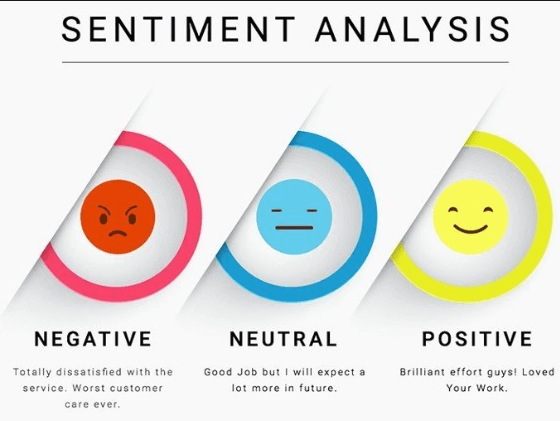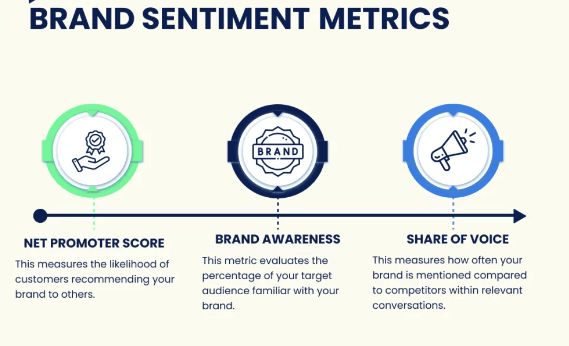
The Crucial Role of Sentiment Analysis in Building Strong Brands
Sentiment analysis, a dynamic tool in natural language processing, delves into deciphering the emotional tone behind textual content. This intricate process involves gauging sentiments as positive, negative, or neutral, offering insights into public perception. In parallel, brand perception stands as a cornerstone of business success, directly influencing consumer decisions and loyalty. The significance of cultivating a favorable brand image cannot be overstated, as it can sway market positioning, customer trust, and competitive advantage.
Understanding Sentiment Analysis
Sentiment analysis, also known as opinion mining, is a natural language processing (NLP) technique used to determine the emotional tone or sentiment expressed in a piece of text. The goal of sentiment analysis is to classify the sentiment of a given text as positive, negative, neutral, or sometimes more fine-grained emotions like happy, sad, angry, etc. Sentiment analysis finds applications in a wide range of fields, including customer reviews, social media monitoring, brand management, market research, and more. It helps organizations understand public perception, identify trends, and make informed decisions based on the sentiments expressed by users and customers.

The Significance of Branding
Branding is vital as it forges a distinct identity and perception for a product, service, or company in the minds of consumers. It encapsulates values, promises, and experiences, fostering trust and loyalty. Effective branding cultivates emotional connections, sets apart from competitors, and simplifies decision-making for customers. A strong brand drives recognition, influences purchasing choices, and supports long-term success. It shapes how a business is perceived, enabling it to convey its purpose, establish credibility, and resonate with target audiences, ultimately creating a lasting and meaningful impression that drives business growth and customer engagement.
How to Use Sentiment Analysis for Brand Building
Embarking from the beginning can be tough, yet it’s pivotal for brand triumph. To execute proficient brand sentiment analysis, adhere to these guidelines:
Identify Social Media Channels
Ascertain where your brand is being talked about on social media. Concentrate on platforms with active discussions to fine-tune your marketing tactics and ensure equitable focus across platforms.
Maintain Equilibrium
Present uniform experiences on all platforms. Refrain from favoring any one platform, ensuring every customer feels equally esteemed to prevent biases in perception.
Context Holds Significance
Factor in context during sentiment analysis. Automated tools might overlook sarcasm or subtle nuances. Grasp the context of mentions for accurate responses and to avert misunderstandings.
Employ Sentiment Analysis Tools
Utilize sentiment analysis tools to streamline the process. These tools furnish insights into industry trends, competitors, and brand feedback, thus economizing time and effort. Executing comprehensive sentiment analysis using these steps elevates your brand’s repute, enabling adjustment of strategies based on authentic customer sentiments across various platforms.


Brand Sentiment Metrics
Brand sentiment metrics quantify the emotional tone surrounding a brand among its audience, assessing whether opinions are positive, negative, or neutral. These metrics include Sentiment Score, measuring sentiment intensity; Positive and Negative Sentiment Percentages; Neutral Sentiment Percentage; and Net Sentiment Score, reflecting overall sentiment balance. Emotion Analysis identifies specific feelings associated with the brand, while the Brand Perception Index considers multiple sentiment factors for a comprehensive view. Trend Analysis tracks sentiment changes over time, aiding marketing understanding. Competitive Sentiment Analysis compares sentiment metrics with rivals, and Sentiment Intensity gauges the strength of opinions. Derived from reviews, social media, and surveys, these metrics offer brands vital insights for strategy refinement.
Brand Sentiment Benefits
Insights into Customers
Through sentiment analysis, you gain profound understanding of how customers perceive your brand. This comprehension encompasses their emotions, viewpoints, and attitudes, empowering you to make informed choices aimed at boosting customer satisfaction.
Customized Customer Interactions
Comprehending sentiment facilitates tailored interactions with customers is one the major brand sentiment benefits. You can customize responses and offerings based on favorable or unfavorable sentiment, amplifying engagement levels.
Management of Reputation
Vigilantly observing sentiment aids in proactive management of your brand’s online reputation. Detecting adverse sentiment allows timely resolution of issues and prevention of potential crises.

The Future of Sentiment Analysis in Branding
The future of sentiment analysis in branding holds immense promise and potential for revolutionizing how businesses understand and interact with their audiences. As technology continues to advance, sentiment analysis algorithms will become more sophisticated, enabling deeper insights into consumer emotions and opinions. The integration of real-time data from various sources, including social media, reviews, and customer feedback, will provide a comprehensive view of brand perception. Brands that effectively harness the power of sentiment analysis will be better equipped to not only understand their customers but also to build authentic connections and enhance their overall brand experience in the dynamic landscape of tomorrow.
- Osama Ehsan
- 19 Sept 2023